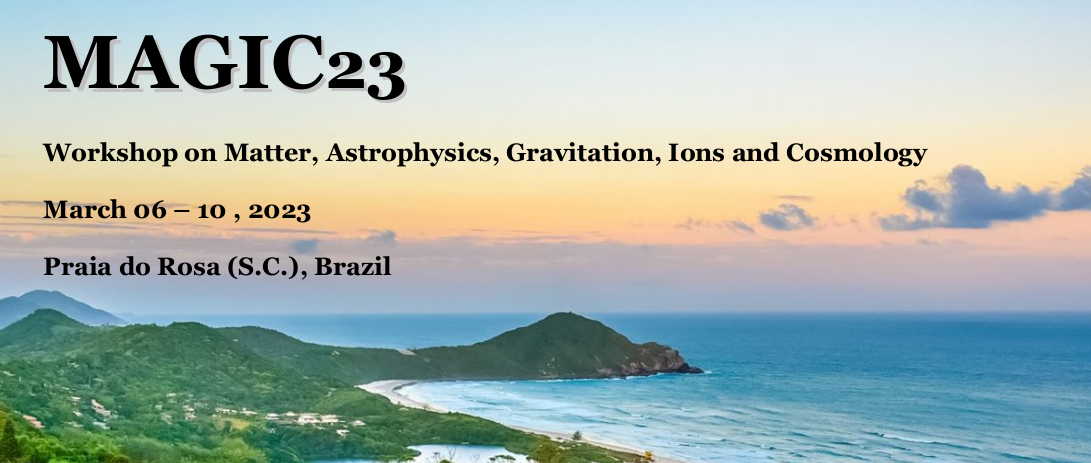Speaker
Description
In the framework of Thomas-Fermi approximation, we study systematically the EOSs and microscopic structures of neutron star matter in a vast density range with nb ≈ 10-10 -2 fm-3, where various covariant density functionals are adopted, i.e., those with nonlinear self couplings (NL3, PK1, TM1, GM1, MTVTC) and density-dependent couplings (DD-LZ1, DDME-X, PKDD, DD-ME2, DD2, TW99). Six types of nuclear matter structures (droplet, rod, slab, tube, bubble, and uniform) are examined adopting spherical and cylindrical approximations for the Wigner-Seitz cell, where the optimum configurations in β-equilibrium are obtained by searching for the energy minimum at fixed baryon number density nb. It is found that the EOSs generally coincide with each other at nb <10-4 fm-3 and 0.1 fm-3 <nb <0.3 fm-3, while in other density regions they are sensitive to the effective interactions between nucleons. By adopting functionals with larger slope of symmetry energy L, the curvature parameter Ksym and neutron drip density generally increase, while the droplet size, proton number of nucleus, core-crust transition density, and onset density of non-spherical nuclei decrease. All functionals predict neutron stars with maximum masses exceeding the two-solar-mass limit, while those of DD2, DD-LZ1, DD-ME2, and DDME-X predict optimum neutron star radii according to the observational constraints. Approximate linear correlations between neutron stars’ radii at M = 1.4 M⊙ and 2 M⊙, the slope L and curvature parameter Ksym of symmetry energy are observed as well. The results presented here are applicable for the investigations on the structures and evolutions of compact stars in a unified manner.

